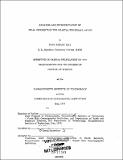| dc.contributor.advisor | Gabriel T. Csanady. | en_US |
| dc.contributor.author | May, Paul Wesley, 1950- | en_US |
| dc.contributor.other | Woods Hole Oceanographic Institution. | en_US |
| dc.contributor.other | Massachusetts Institute of Technology. Dept. of Earth and Planetary Sciences. | en_US |
| dc.contributor.other | Joint Program in Oceanography. | en_US |
| dc.contributor.other | Massachusetts Institute of Technology. Dept. of Meteorology. | en_US |
| dc.date.accessioned | 2012-02-24T19:02:43Z | |
| dc.date.available | 2012-02-24T19:02:43Z | |
| dc.date.issued | 1979 | en_US |
| dc.identifier.uri | http://hdl.handle.net/1721.1/69206 | |
| dc.description | Thesis (Sc. D.)--Joint Program in Oceanography (Massachusetts Institute of Technology, Dept. of Earth and Planetary Sciences and the Dept. of Meteorology; and the Woods Hole Oceanographic Institution), 1979. | en_US |
| dc.description | Vita. Also issued in leaves. | en_US |
| dc.description | Includes bibliographical references (p. [191]-197). | en_US |
| dc.description.abstract | Concern with the impact of human activities on the coastal region of the world's oceans has elicited interest in the so-called "coastal boundary layer"-that band of water adjacent to the coast where ocean currents adjust to the presence of a boundary. Within this zone, roughly 10 km wide, several physical processes appear to be important. One of these, the tides, is of particular interest because their deterministic nature allows unusually thorough analysis from short time series, and because they tend to obscure the other processes. The Coastal Boundary Layer Transect (COBOLT) experiment was conducted within 12 km of the south shore of Long Island, New York to elucidate the characteristics of the coastal boundary layer in the Middle Atlantic Bight. Analysis of data from this experiment shows that 35% of the kinetic energy of currents averaged over the 30 m depth are due to the semidiurnal and diurnal tides. The tidal ellipses, show considerable vertical structure. Near-surface tidal ellipses rotate in the clockwise direction for semidiurnal and diurnal tides, while near-bottom ellipses rotate in the counterclockwise direction for the semidiurnal tide. The angle between the major axis of the ellipse and the local coastline decreases downward for semidiurnal and increases downward for diurnal tides. The major axis of the tidal ellipse formed from the depth averaged semidiurnal currents is not parallel to the local shoreline but is oriented at an angle of -15 degrees. This orientation "tilt" is a consequence of the onshore flux of energy which is computed to be about 800 watts/m. A constant eddy viscosity model with a slippery bottom boundary condition reproduces the main features observed in the vertical structure of both semidiurnal and diurnal tidal ellipses. Another model employing long, rotational, gravity waves (Sverdrup waves) and an absorbing coastline explains the ellipse orientations and onshore energy flux as a consequence of energy dissipation in shallow water. Finally, an analytical model with realistic topography suggests that tidal dissipation may occur very close (2-3 km) to the shore. Internal tidal oscillations primarily occur at diurnal frequencies in the COBOLT data. Analysis suggests that this energy may be Doppler-shifted to higher frequencies by the mean currents of the coastal region. These motions are trapped to the shore and are almost exclusively first baroclinic mode internal waves. | en_US |
| dc.description.statementofresponsibility | by Paul W. May. | en_US |
| dc.format.extent | 197, [1] p. | en_US |
| dc.language.iso | eng | en_US |
| dc.publisher | Massachusetts Institute of Technology | en_US |
| dc.rights | M.I.T. theses are protected by
copyright. They may be viewed from this source for any purpose, but
reproduction or distribution in any format is prohibited without written
permission. See provided URL for inquiries about permission. | en_US |
| dc.rights.uri | http://dspace.mit.edu/handle/1721.1/7582 | en_US |
| dc.subject | Joint Program in Oceanography. | en_US |
| dc.subject | Earth and Planetary Sciences. | en_US |
| dc.subject | Meteorology. | en_US |
| dc.subject | Woods Hole Oceanographic Institution. | en_US |
| dc.subject.lcc | GC7.4 .M45 | en_US |
| dc.subject.lcsh | Tidal currents | en_US |
| dc.subject.lcsh | Coasts | en_US |
| dc.title | Analysis and interpretation of tidal currents in the coastal boundary layer | en_US |
| dc.type | Thesis | en_US |
| dc.description.degree | Sc.D. | en_US |
| dc.contributor.department | Joint Program in Oceanography | en_US |
| dc.contributor.department | Massachusetts Institute of Technology. Department of Meteorology | en_US |
| dc.contributor.department | Woods Hole Oceanographic Institution | en_US |
| dc.contributor.department | Massachusetts Institute of Technology. Department of Earth, Atmospheric, and Planetary Sciences | |
| dc.contributor.department | Massachusetts Institute of Technology. Department of Ocean Engineering | |
| dc.identifier.oclc | 53826483 | en_US |
